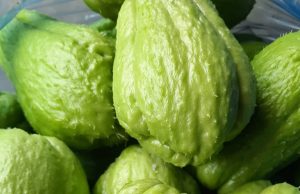
The rosary plant (common name Senecio rowleyanus ) is a wonderful succulent prized for its distinctive pearl-shaped leaves . However, few people know that the rosary plant can bloom and give us a beautiful spectacle.
This perennial and hanging succulent has fleshy leaves that are nothing more than a water reserve that allows it to survive during periods of drought. Although it is very beautiful, it is poisonous to children and pets.
The flowers of the rosary plant are small, white and star-shaped. They have a delicious cinnamon-like scent and appear in late spring or summer.
Although it is an easy plant to care for, it is likely that it will never bloom if the conditions of its natural habitat are not reproduced. To get the Rosary or Senecio plant to bloom, follow the advice listed below.

1. Sufficient light for the rosary plant to thrive
This succulent requires ample but indirect sunlight. The plant deforms as it expands in search of sunlight.
If possible, place the plant near a shady window so it doesn’t burn in direct sunlight.
2. Watering for the flowering of the rosary plant
The rosary plant does not tolerate excessive humidity, which could cause its roots to rot and die. It is important that the pot has good drainage.
Water only every 10-15 days when the soil is completely dry. In the warmer months you can increase the frequency.
3. Fertilizers to make the rosary plant bloom
Apply a succulent-grade fertilizer once a month during spring and summer to encourage flower appearance. However, avoid this in winter.
If you have coffee grounds, you can dilute them with a little water and use them to water the rosary plant.
Remember that it is also necessary to prune the rosary plant and remove dry or rotten stems.
Now that you know how to make a rosary plant bloom , apply the advice described above to enjoy this wonderful natural spectacle.



















